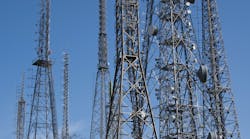Following its initial research that showed the potential of millimeter-wave spectrum, the New York University Wireless research center is making its channel simulation software for these largely uncultivated bands free for anyone to download. With the software, it will also release measurement data from over three years of channel testing.
The software will help wireless companies better understand the behavior and capabilities of mm-wave bands. Applying channel data measured in cities in New York and Texas, the software can calculate time delays, locate the direction of arriving energy, and pin down received power levels. The measurements span the 28 GHz and 73 GHz bands.
The software is already being used by French wireless carrier Orange, which has recently been under the microscope for its proposed merger with the mobile division of France’s Bouygues. Other wireless companies sponsoring the research are using it, but the university would not explain further in a statement. The research center counts Ericsson, AT&T, Qualcomm, and Nokia among its supporters.
New York University was among the earliest research centers that latched onto the benefits of mm-wave bands, which wireless carriers are trying to reserve for fifth-generation (5G) networks. Because of their highly directional nature, these bands permit antennas to operate in close proximity without causing interference, while providing up to 200 times more capacity that today's cellular spectrum.
The software release came as wireless companies in the United States have intensified calls for the government to license new mm-wave spectrum. Verizon, T-Mobile, and other major carriers have urged opening mm-wave spectrum to accelerate the development of 5G wireless networks. Verizon has been one of the most vocal supporters of opening spectrum, as it plans to launch preliminary 5G networks in 2017. That in spite of criticism for not waiting until industry standards emerge.
Earlier this month, Tom Wheeler, the chairman of the Federal Communications Commission (FCC), promised the Senate board that the United States would set aside new spectrum for 5G faster than any other nation. The organization has singled out 28 GHz, 38 GHz, 39 GHz, and 73 GHz as initial candidates for licensing.
“There’s a difference between the way we approach 5G spectrum and the rest of the world,” said Wheeler in his testimony to the Senate. “We will allocate 5G spectrum faster than any other nation on the planet,” he added. “We then will get out of the way and let innovation and competition reign.”
The FCC has already begun to define rules on opening mm-wave bands above 24 GHz. And earlier this month, the Senate Committee on Commerce, Science, and Transportation helped push through the Mobile Now Act, which targets building new wireless towers, laying more fiber optic cables, and opening high-frequency spectrum.
5G is widely expected to bring about an hugely diverse range of technologies on a large scale. Autonomous cars could connect with each other over wireless networks to prevent accidents. 5G networks could also be tailored to different services, ranging from data-rich smartphones to low-power industrial sensors. With all these new technologies, however, wireless networks have struggled to keep pace with data demands.
“Over the last 40 years, computer clock speeds and memory sizes rose by as much as six orders of magnitude. Yet communications frequencies have barely moved,” Theodore Rappaport, director of NYU Wireless, said in a statement. “The only hope to meet mobile traffic demand is to utilize more spectrum.”
The researchers at NYU Wireless have been studying mm-wave bands for almost five years—back before most thought it was worth the trouble to stretch cellular networks into higher bands. They have developed other open-source tools for testing this spectrum, including an advanced testbed for mm-wave channels that it built with SiBeam and National Instruments.
